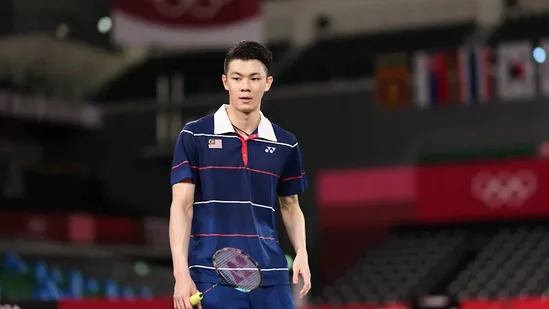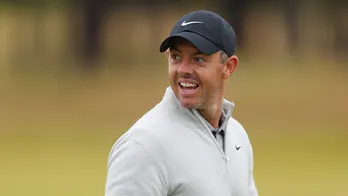Lee Zii Jia incident revives call for changes in world badminton
Badminton was caught off-guard recently when Malaysian star and reigning All England Champion Lee Zii Jia decided to sever ties with his national federation and become an ‘independent’ player. Jia wanted his own team of coaches and the freedom to plan training programme.  PREMIUM
PREMIUM
The Badminton Association of Malaysia (BAM) responded by banning Zii Jia for two years. Given that Jia was one of the best players from the country after legendary Lee Chong Wei, fans reacted to the decision with anger.
Olympic champion Victor Axelsen came out in Jia’s support. “If a player (in this case LZJ) feels it’s best for him to follow another path where he is more independent as a player, then that is what he should do IMO. It’s his career and his life after all,” the Dane wrote in a Facebook post.
Following the uproar, BAM and Zii Jia negotiated an agreement and his ban was lifted.
The controversy though raised an important issue. The Badminton World Federation (BWF) states entries to any tournament sanctioned by it must be routed through national federations. Players, therefore, have to be registered with the national federation or at least have a working relationship with the federation for their entries to be submitted. For years, national federations have leveraged this rule to threaten and ban players. The issues have ranged from coaching, parings, financial remunerations to sponsorship conflicts.
Suspensions, bans and litigations are a constant players in Asian countries – that dominate the sport – have to face. Top Korean doubles star Seo Seung Jae was suspended in 2020 due to a conflict of contract while signing for a professional club. Indians too have faced their federation’s ire: U. Vimal Kumar in the 1980s, Pullela Gopichand and Aparna Popat in the mid-1990s, when the Badminton Association of India (BAI) threatened to stop players from Prakash Padukone academy from competing internationally, and Jwala Gutta in 2013 when she was given a life ban following a controversy in the Premier Badminton League. Gutta had to seek relief in the Delhi High Court.
“Players must have the right to choose,” says Gutta. “The association can ask them to be available for team championships, like Thomas Cup/Uber Cup. But you can’t stop them from playing,” says Gutta, world championships bronze medallist in 2011 and two-time Uber Cup bronze medallist.
“Even if a player wants to move out, they are still representing the nation. In open tournaments if they want to spend their money, resources and hire their own coaches, they should be allowed because individual requirements vary and we need to respect that,” says Kumar.
The Zii Jia episode brought this to the forefront again. “Why is the federation deciding who gets to enter OPEN (sic) tournaments? Then it’s not really an open tournament, is it???,” said world No. 22 Hans-Kristian Solberg Vittinghus. “I really hope BWF soon realises this is not feasible... National federations can’t hold this kind of power. I know many federations would never use this power to block their own players from competing, but it shouldn’t even be a possibility.”
BWF continues the ‘centralised entry system’for reasons of integrity, logistics and to ensure the sport is fair and clean, said secretary Thomas Lund. In a detailed response, the first of its kind, to HT, Lund said the need for a “strong relationship” between players, member associations and BWF is necessary to “ensure a fair and clean sport vis-à-vis anti-doping mechanisms, anti-match fixing structures, and ensuring compliance with global sporting legal systems.”
“As part of this structure, thousands of tournament entries worldwide each week are validated and completed correctly and on time, but also for integrity reasons as there have been previous attempts by ‘non-genuine badminton players’ to enter tournaments for the purpose of obtaining visas to different countries as a way of seeking refugee status. The current entry process submitted through national associations does help as a validation mechanism to ensure only ‘genuine players’ are entered. Yes, this issue is mainly relevant to lower tiered international tournaments where lower ranked players participate, but it’s still an aspect in which the national associations play a vital role,” said Lund, a five-time world championships doubles medallist from Denmark.
There have also been instances where players have turned ‘independent,’ having come to an agreement with their federations. “These players are still treated as coming under their national governance structure for the purpose of necessary legal frameworks in badminton, but they are entered as individuals and are responsible for their participation,” said Lund.
Lund also said the powers of entry procedures should not be abused by federations. “BWF does have a policy outlining that considerations for entries of players should always be based on reasonable terms. It is, however, not acceptable if player entries are withheld without any reasonable and justifiable cause, and that powers of entry procedures should not be abused with the sole intention of blocking players from participating in BWF sanctioned tournaments.”
But BWF does not interfere in conflicts between players and national federations unless there is a breach of international rules, regulations, and policies. “In such cases, the parties can submit a case to BWF for review. For clarity, BWF has not been formally approached, nor matters formally referred to the BWF, in regard to any of the recent incidents in question,” said Lund.
Pitfalls of centralised training
Asian powerhouses like China, South Korea, Malaysia have gained from a state-funded structure. A centralised training programme, which has often faced charges of favouritism and lack of transparency, forms the core of badminton’s talent pool in most Asian countries. The procedure to route entries through national federations thus works well for these countries to often have the last word on player selection and other issues.
In India too, the sport is driven by government funding. Elite badminton players have benefitted from a centralised programme, especially in the last decade. From participating in international tournaments to hiring of coaches and support staff, players at the top level have everything provided for by the government. But players who are outside the national training programme have found the going tough.
Such as Subhankar Dey. The 28-year-old, currently world ranked 56, self-funded an almost three-year stay in Denmark. Last year, he played for a club in France. He often has to rush back to India ignoring club commitments to take part in domestic tournaments to be in reckoning for the India team.
“There should be clarity as to what an independent player needs to do for India selection. Sometimes it is on the basis of world rankings, sometimes India rankings, and selection tournaments, says Dey, who reached a career-high of 38 in 2020.
Vimal says the centralised system of coaching needs to change. “It has worked to a certain level when a player needs support at the start of his professional career but subsequently a player should have the choice to make his or her own decisions.”
Axelsen breaks the mould
Axelsen is among the players doing just that. After winning gold at Tokyo Olympics, Axelsen shifted base to Dubai from Denmark to save travel time and take care of health issues (he has asthma and hay fever). Axelsen has been inviting world’s top players to train with him and getting positive response— world champion Loh Kean Yew, India’s rising star Lakshya Sen are among those who have trained with him in Dubai.
“I’ll always go chasing that extra percent. I’ve always dreamed of creating my own setup and I live to challenge myself and get in deep water,” said Axelsen last August explaining his decision to shift.
“I want to win titles for me and for Denmark. Therefore, up to the big championships I will also be a part of the national team’s daily training. And that’s why I’ll never compromise but always go wholeheartedly to be the best version of myself.”
Experience unrestricted digital access with HT Premium
Explore amazing offers on HT + Economist Start 14 Days Free Trial Already Subscribed? Sign In
Disclaimer: The copyright of this article belongs to the original author. Reposting this article is solely for the purpose of information dissemination and does not constitute any investment advice. If there is any infringement, please contact us immediately. We will make corrections or deletions as necessary. Thank you.







